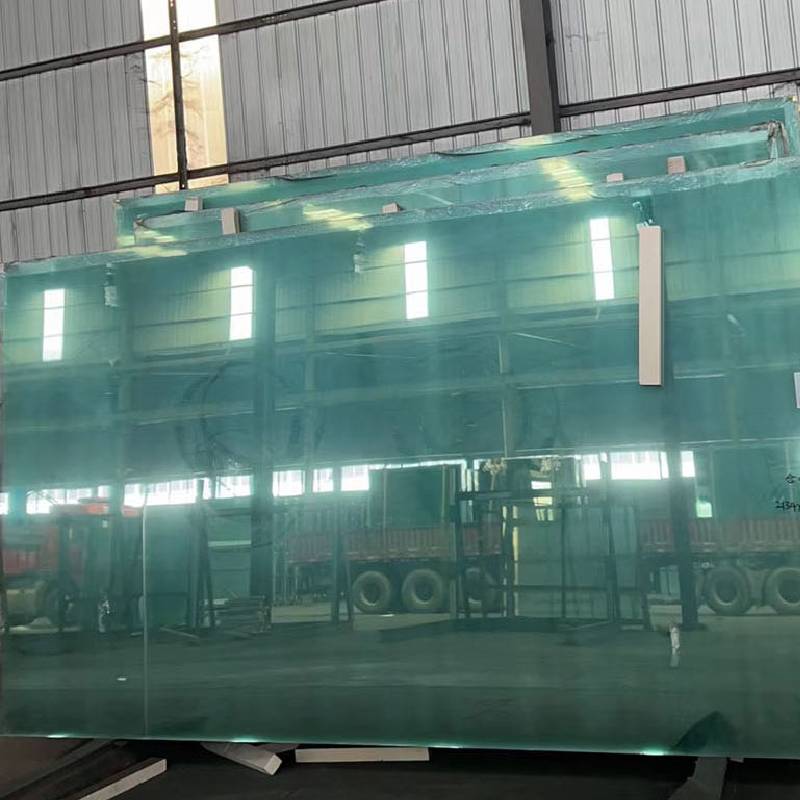Exploring Different Types of Obscure Glass
Obscure glass has a distinctive charm that blends functionality with aesthetic appeal. It is characterized by its ability to diffuse light while maintaining privacy, and it comes in various types, each with its unique features and applications. In this article, we will explore the different types of obscure glass, their characteristics, and where they are typically used.
1. Frosted Glass
Frosted glass is perhaps the most well-known type of obscure glass. It is created by sandblasting or acid etching clear glass, which gives it a translucent finish. This type of glass allows light to pass through but obscures details, making it ideal for spaces where privacy is a priority. Common applications include bathroom windows, office partitions, and shower doors. The frosted texture also adds an elegant touch to any design, making it a favorite among architects and interior designers.
2. Textured Glass
Textured glass is produced through various forming techniques that create patterns on the surface of the glass. These patterns are not only visually appealing but also enhance the obscuring properties of the glass. The texture can vary widely—ranging from simple geometric patterns to intricate floral designs. Textured glass is frequently used in decorative skylights, entrance doors, and interior windows, where light diffusion and aesthetic appeal are desired.
3. Laminated Glass
Laminated glass is made by sandwiching a layer of polymer between two sheets of glass. This type of glass can be produced with obscuring properties, making it useful for both safety and privacy. The layers can include a frosted or tinted interlayer, which offers significant light diffusion while adding a level of security and UV protection. Laminated glass is commonly used in commercial buildings, storefronts, and schools, where safety and privacy are important.
4. Obscure Glass with Patterns
different types of obscure glass
This type of glass features pre-printed or embossed designs that enhance both the visual and functional properties of the glass. The patterns can range from simple lines to complex images, adding a decorative element while still providing privacy. Obscure glass with patterns is often used in storefronts, office buildings, and residential applications, where they can serve as a beautiful focal point while maintaining a degree of seclusion.
5. Tinted Glass
Tinted glass incorporates a color into the glass during the manufacturing process, which not only affects its appearance but also its light-transmitting properties. Tinted obscure glass can reduce glare and control heat gain from sunlight, making it energy-efficient. It offers increased privacy without sacrificing too much natural light. This type of glass is ideal for large windows, sliding doors, and commercial buildings where energy efficiency and privacy are equally important.
6. Mirrored Glass
Mirrored glass has a reflective coating on one side, which makes it an intriguing option for obscuring visibility from outside while allowing light to enter. This type of glass is often used in settings where one-way visibility is desired, such as in security applications and high-end retail stores. During the day, the reflective surface maintains privacy for interiors; however, it is essential to consider lighting conditions, as mirrored glass can lose its privacy effect at night.
7. Acid-etched Glass
Acid-etched glass is created using a chemical process that roughens the glass surface, resulting in a clear yet obscured appearance. Unlike frosted glass, acid-etched glass retains a level of clarity while still preventing detailed visibility. This type of glass is versatile and can be customized with logos or designs, making it a popular choice for office spaces, conference rooms, and decorative installations.
Conclusion
Obscure glass serves a critical role in modern architecture and design, providing both privacy and style. From frosted to textured, laminated, and patterned options, the variety of obscure glass types caters to diverse needs and preferences. As more people seek to balance openness with seclusion in their spaces, the demand for different forms of obscure glass is likely to continue growing. Whether you’re looking to enhance your home’s aesthetic or ensure privacy in a commercial setting, there is an obscure glass solution that can meet your needs and elevate your design.
 Afrikaans
Afrikaans  Albanian
Albanian  Amharic
Amharic  Arabic
Arabic  Armenian
Armenian  Azerbaijani
Azerbaijani  Basque
Basque  Belarusian
Belarusian  Bengali
Bengali  Bosnian
Bosnian  Bulgarian
Bulgarian  Catalan
Catalan  Cebuano
Cebuano  Corsican
Corsican  Croatian
Croatian  Czech
Czech  Danish
Danish  Dutch
Dutch  English
English  Esperanto
Esperanto  Estonian
Estonian  Finnish
Finnish  French
French  Frisian
Frisian  Galician
Galician  Georgian
Georgian  German
German  Greek
Greek  Gujarati
Gujarati  Haitian Creole
Haitian Creole  hausa
hausa  hawaiian
hawaiian  Hebrew
Hebrew  Hindi
Hindi  Miao
Miao  Hungarian
Hungarian  Icelandic
Icelandic  igbo
igbo  Indonesian
Indonesian  irish
irish  Italian
Italian  Japanese
Japanese  Javanese
Javanese  Kannada
Kannada  kazakh
kazakh  Khmer
Khmer  Rwandese
Rwandese  Korean
Korean  Kurdish
Kurdish  Kyrgyz
Kyrgyz  Lao
Lao  Latin
Latin  Latvian
Latvian  Lithuanian
Lithuanian  Luxembourgish
Luxembourgish  Macedonian
Macedonian  Malgashi
Malgashi  Malay
Malay  Malayalam
Malayalam  Maltese
Maltese  Maori
Maori  Marathi
Marathi  Mongolian
Mongolian  Myanmar
Myanmar  Nepali
Nepali  Norwegian
Norwegian  Norwegian
Norwegian  Occitan
Occitan  Pashto
Pashto  Persian
Persian  Polish
Polish  Portuguese
Portuguese  Punjabi
Punjabi  Romanian
Romanian  Russian
Russian  Samoan
Samoan  Scottish Gaelic
Scottish Gaelic  Serbian
Serbian  Sesotho
Sesotho  Shona
Shona  Sindhi
Sindhi  Sinhala
Sinhala  Slovak
Slovak  Slovenian
Slovenian  Somali
Somali  Spanish
Spanish  Sundanese
Sundanese  Swahili
Swahili  Swedish
Swedish  Tagalog
Tagalog  Tajik
Tajik  Tamil
Tamil  Tatar
Tatar  Telugu
Telugu  Thai
Thai  Turkish
Turkish  Turkmen
Turkmen  Ukrainian
Ukrainian  Urdu
Urdu  Uighur
Uighur  Uzbek
Uzbek  Vietnamese
Vietnamese  Welsh
Welsh  Bantu
Bantu  Yiddish
Yiddish  Yoruba
Yoruba  Zulu
Zulu 

